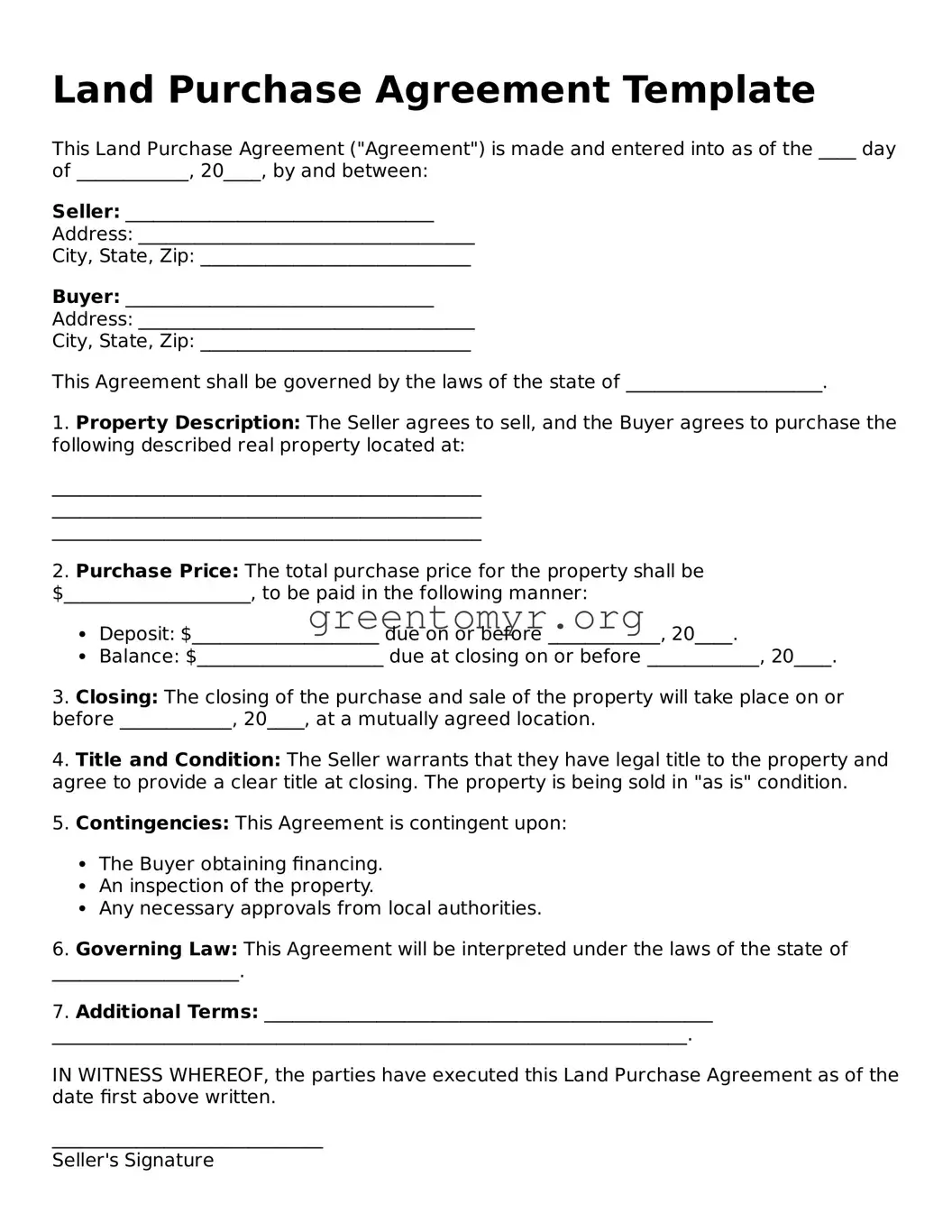Land Purchase Agreement Template
This Land Purchase Agreement ("Agreement") is made and entered into as of the ____ day of ____________, 20____, by and between:
Seller: _________________________________
Address: ____________________________________
City, State, Zip: _____________________________
Buyer: _________________________________
Address: ____________________________________
City, State, Zip: _____________________________
This Agreement shall be governed by the laws of the state of _____________________.
1. Property Description: The Seller agrees to sell, and the Buyer agrees to purchase the following described real property located at:
______________________________________________
______________________________________________
______________________________________________
2. Purchase Price: The total purchase price for the property shall be $____________________, to be paid in the following manner:
- Deposit: $____________________ due on or before ____________, 20____.
- Balance: $____________________ due at closing on or before ____________, 20____.
3. Closing: The closing of the purchase and sale of the property will take place on or before ____________, 20____, at a mutually agreed location.
4. Title and Condition: The Seller warrants that they have legal title to the property and agree to provide a clear title at closing. The property is being sold in "as is" condition.
5. Contingencies: This Agreement is contingent upon:
- The Buyer obtaining financing.
- An inspection of the property.
- Any necessary approvals from local authorities.
6. Governing Law: This Agreement will be interpreted under the laws of the state of ____________________.
7. Additional Terms: ________________________________________________
____________________________________________________________________.
IN WITNESS WHEREOF, the parties have executed this Land Purchase Agreement as of the date first above written.
_____________________________
Seller's Signature
_____________________________
Buyer's Signature
